Police Drug Wars Impact: A Comprehensive Analysis
The Impact of Police in Drug Wars

Key Highlights
- The War on Drugs significantly impacted law enforcement strategies, leading to increased police presence in marginalized communities and the involvement of federal bureau authorities. This has resulted in a rise in drug-related arrests and a heavier focus on drug law enforcement.
- This approach has disproportionately affected minority communities, including black people, leading to racial disparities in arrests and sentencing. As a result, there have been calls for criminal justice reform and a reassessment of drug policies.
- The financial burden of the War on Drugs is substantial, diverting funds from treatment and prevention programs, while straining the prison system. Proponents for alternative approaches argue for a shift in focus, prioritizing public health over punitive measures.
- The global impact of the War on Drugs is undeniable, with collaborations between countries and the federal government to combat drug trafficking. However, critics argue that this approach has had limited success in curbing drug use and has fueled violence in some regions.
- There is ongoing debate about the future of drug policy, ranging from decriminalization to legalization. Alternative strategies, including harm reduction programs, are gaining traction as a means to mitigate the negative consequences of drug use.
Introduction
The War on Drugs in the United States has greatly affected law enforcement and criminal justice. Since it started, this campaign has put a lot of resources into stopping drug use and trafficking. They have tried to do this by using strict rules and police actions. However, this approach has led to much discussion and criticism. People are worried about how it affects communities, whether the strategies work, and what it costs society.
The Origins of the War on Drugs
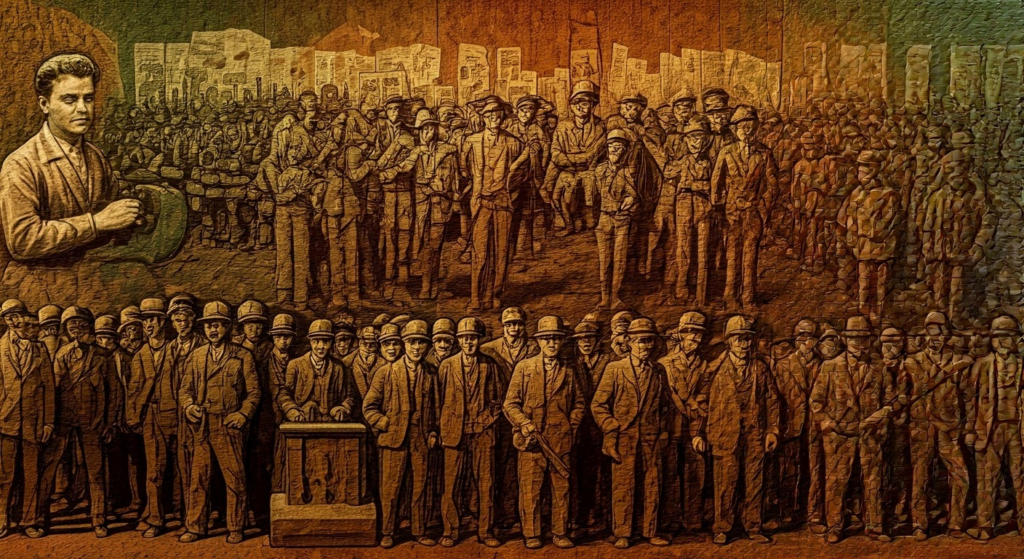
The term "War on Drugs" became popular during President Nixon's time in the early 1970s. But the history of drug prohibition in the United States goes back much further. This "war" is the result of many social, political, and economic changes that have influenced how the country deals with drug use and control.
Understanding this history is important. It helps us see the complex drug policies, their effects on marginalized communities, and the ongoing difficulties in handling drug use fairly and effectively.
Early 20th Century and the Harrison Narcotics Tax Act
The early 20th century was an important time for how the United States dealt with drugs, particularly in the aftermath of the Civil War. In 1914, the Harrison Narcotics Tax Act was passed under President Woodrow Wilson. This act played a key role in changing drug prohibition laws in the country. Although it looked like a tax law, it actually made owning and sharing opiates and cocaine illegal. This was a big move towards tougher drug control.
The Harrison Act started the process of making drug use illegal. It shifted views from seeing drug use mainly as a medical or social problem to needing action from law enforcement. This act came about due to a mix of social fears, racial biases, and political actions. Its effects have been widespread, leading to the War on Drugs many years later.
The impact of the Harrison Act can still be seen in today’s drug policies and discussions about changes in criminal justice. It shows how decisions made early on, often based on fears rather than facts, can lastingly affect public health, individual rights, and the structure of American society.
The 1970s and Nixon's Declaration
The 1970s saw a big increase in illegal drug use in the United States, which raised a lot of social worry. In 1971, President Richard Nixon decided to act on this concern through his foreign policy. He officially announced a "War on Drugs," declaring drug abuse as "public enemy number one," which led to discussions about the reform of marijuana laws spearheaded by the national organization focused on drug policy reform. This important moment was a shift towards a stronger focus on law enforcement, stopping drug traffic, and punishing offenders.
Nixon's announcement pushed the drug issue to the top of national discussions. More money was given to drug law enforcement agencies, including the Bureau of Narcotics and the Office of National Drug Control Policy (ONDCP) and the Office of Drug Abuse Law Enforcement (ODALE), as part of the broader drug abuse law enforcement strategy. There were tougher rules for drug offenses. New groups, like the Drug Enforcement Administration (DEA), were set up in 1973 to fight drug use.
The War on Drugs has greatly affected the American criminal justice system. It has led to more people being jailed and changed law enforcement goals for many years. However, it has faced a lot of criticism. Many say it has not reduced drug use or has affected minority communities unfairly.
Law Enforcement's Role in Drug Policy Enforcement
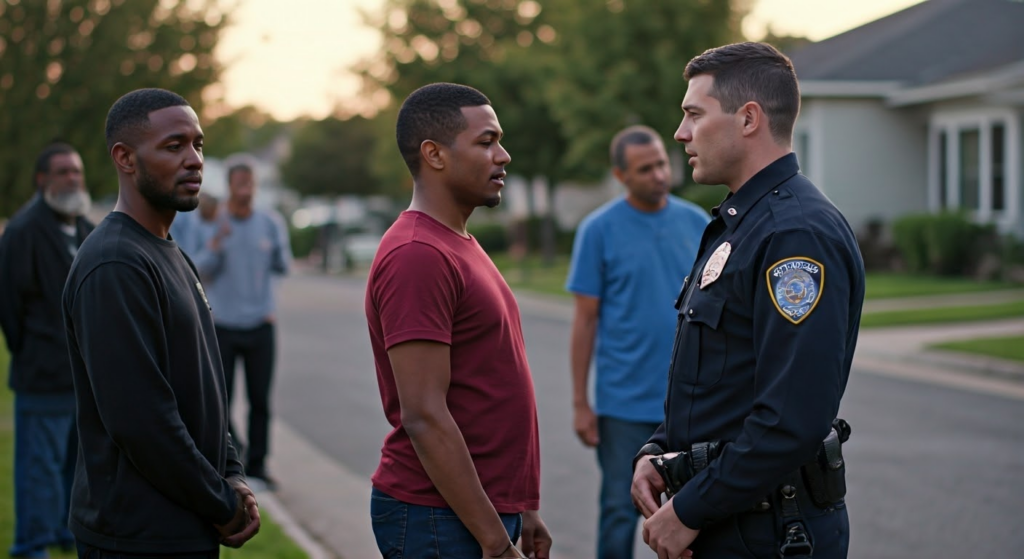
Law enforcement agencies are key in carrying out drug policies. They have an important job in the War on Drugs. Their duties include breaking up drug trafficking networks, arresting people who commit drug offenses, and reducing drug use with visible police work.
This role has changed. The drug market is now more complicated, and there is more focus on the social and health effects of drug use. This change calls for a close look at law enforcement strategies, how well they work, and how they affect relations in the community.
Strategies and Tactics Used by Police drug war
Law enforcement agencies use different methods to fight drug-related crime. These include visible patrols and drug raids in areas known for drug activity. They also conduct undercover operations to take down big drug trafficking networks. Informants, surveillance technology, and working with federal agencies are common parts of drug enforcement.
Some methods, like stop-and-frisk tactics, are often criticized. People say these tactics unfairly target minority communities and harm trust between police officers and the public. Additionally, the success of certain tactics, especially those aimed at low-level drug offenses, is often questioned regarding their effect on overall drug use rates.
The strategies in the War on Drugs need regular review and change. There is a growing focus on balancing enforcement actions with public health efforts. It’s important to address the main causes of drug use and to rebuild trust in communities most affected by these policies.
Federal vs. Local Jurisdictions in Drug Law Enforcement
Drug law enforcement in the United States is a complicated system that addresses the issue of dangerous drugs. It includes both federal agencies, like the DEA, and local police departments. Federal agencies mainly focus on big drug trafficking groups and drug operations that cross state lines. Meanwhile, local police departments deal with drug issues and related crimes in their communities.
This separation of duties can lead to problems. It can be hard to coordinate enforcement and agree on drug policies. When federal agents are active in local areas, it can sometimes hurt relationships with the community, especially in neighborhoods that are already marginalized.
There is an ongoing discussion about how to best balance power and resources between federal and local groups in drug law enforcement, particularly in relation to national security concerns. Many people believe that local areas should have more control and freedom to adjust their methods based on the specific needs of their communities.
The Social Impact of Policing Drug Wars
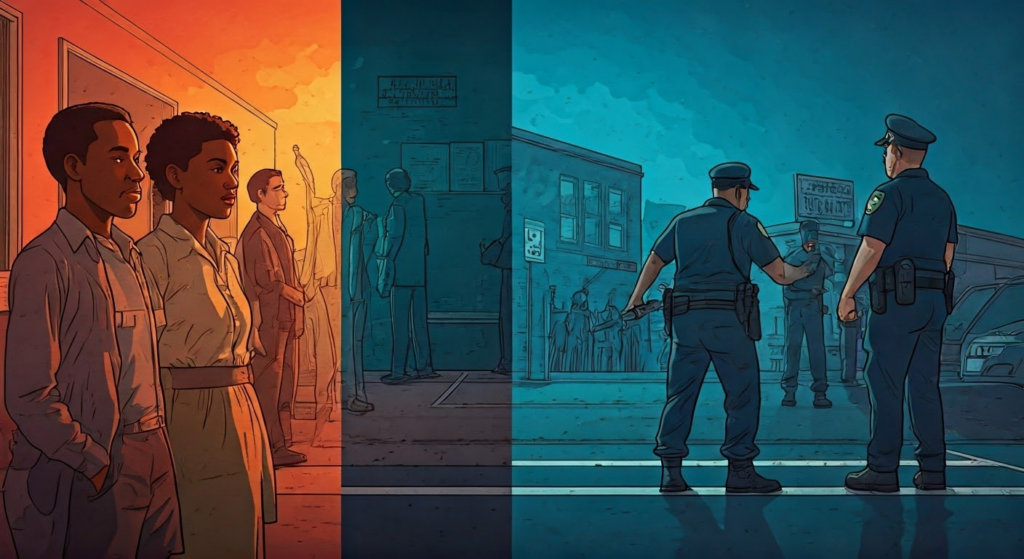
Policing the War on Drugs deeply affects society. It has a big impact on communities and makes inequalities worse. Putting too much focus on arrests and jails has hurt minority communities more than others. This has led to cycles of poverty, family problems, and fewer chances in life.
Also, treating drug use as a crime often makes people feel ashamed. This can stop them from getting the help and support they need. These social issues show why we need better ways to handle drug use. We should focus on public health and reducing harm, rather than just punishing people.
Racial Disparities in Drug Arrests and Sentencing
One big concern about the War on Drugs is how it adds to racial differences in the criminal justice system. Even though drug use is similar in all racial groups, Black and Hispanic people are much more likely to be arrested and sent to jail for drug offenses than white people.
This difference comes from several reasons. These include law enforcement actions like racial profiling, more police presence in minority neighborhoods, and unfair sentencing for crack cocaine, which is more common in Black communities compared to powder cocaine, which has been highlighted by the New York Times for the first time since the early 1980s.
These issues point out the systemic racism in the criminal justice system. They show the urgent need for big changes. To fix these inequalities, we need to get rid of unfair laws, like mandatory minimum sentences for drug offenses. We also need to put in place practices that ensure fairness and justice for everyone.
Community Relations and Trust in Law Enforcement
Aggressive drug enforcement strategies often involve heavy policing in minority neighborhoods. This approach has harmed relationships between law enforcement and the communities. The constant fear of arrest and practices like stop-and-frisk can damage public trust. This creates a tense environment filled with fear and anger.
When trust breaks down, the effects can be serious. If communities see law enforcement as a threat instead of protection, they are less likely to help during police investigations or report crimes. This makes it harder to keep everyone safe.
To fix this issue, law enforcement needs to change how they work. They should shift from aggressive enforcement to community policing. This means focusing on teamwork, respect, and understanding between police and the community. It encourages open conversations and shared responsibility for safety.
The Economic Costs of Drug Wars
The costs of fighting the War on Drugs are huge. Every year, we spend billions of dollars on law enforcement, jailing people, and stopping drug flow. This money could be better used for education, healthcare, and social programs that would help deal with the reasons people use drugs.
This financial strain goes beyond what we directly spend. It includes lost productivity from people stuck in the criminal justice system. It also covers the social costs of broken families and communities. Lastly, it puts pressure on healthcare systems that are dealing with addiction and overdose issues.
Funding for Drug Enforcement vs. Rehabilitation
The way resources are given in the War on Drugs has usually focused more on enforcement than on helping people. Because of this, a lot of money goes to arresting and locking up those with drug offenses. At the same time, treatment programs and support services do not get enough funding.
This lack of funding shows a harsh method that chooses punishment instead of tackling addiction as a public health issue. This strategy has not worked well in lowering drug use. It has also caused many people to go back to their old habits, keeping the problems going.
Supporters of a better approach say we should spend more on prevention programs. They emphasize the need to increase access to good treatment options and focus on rehabilitation. This would help end the cycle of addiction and lessen its social and economic costs.
The Burden on the Prison System
The War on Drugs has put a huge strain on the US prison system. Harsh prison sentences for drug offenses have caused a rise in the number of people in prisons. This increase has overwhelmed jails, creating overcrowded conditions, limited resources, and serious problems in giving inmates proper healthcare, education, and rehabilitation programs.
The cost to taxpayers is very high. It can cost tens of thousands of dollars each year to house one inmate. This burden on public money takes away from important social programs and keeps a system in place that often doesn't deal with the real issues behind drug use and crime.
New ideas like drug courts, diversion programs, and changes in sentencing are becoming popular. These options aim to lower incarceration rates for non-violent drug offenses. They are seen as more cost-effective and compassionate ways to tackle drug-related crimes.
International Involvement and Cooperation
The United States' War on Drugs goes beyond its own borders. This war includes working with other countries to fight drug trafficking. The U.S. gives financial aid, shares information, and carries out joint operations with countries known for producing or moving illegal drugs.
But the results of this international work are mixed. On one hand, it has helped break up some trafficking networks. On the other hand, it has been criticized. Some say it leads to more violence, corruption, and human rights issues in places like Latin America.
The Role of the DEA in Foreign Countries
The Drug Enforcement Administration (DEA) is important in the United States' fight against drug trafficking worldwide. DEA agents work in many countries alongside a dedicated DEA agent to partner with foreign governments to take down drug cartels, break supply chains, and extradite people accused of drug crimes in the US.
Still, the DEA's presence overseas brings up issues. Some critics say that focusing too much on reducing supply ignores why law enforcement officials believe people buy drugs in the first place. They also argue that these operations can accidentally cause instability and violence, especially in countries where the government is weak and corruption is common.
People debate how effective the DEA is in its global efforts. Some wonder if it really helps reduce drug availability in the US or if it may make social and political issues worse in the countries where it works.
Partnerships with Countries like Colombia and Mexico
The United States, under the leadership of President Clinton and with insights from Senator John Kerry, works closely with Colombia and Mexico to tackle drug trafficking, similar to the approaches taken during the Reagan administration and in the context of the upcoming presidential election. These partnerships focus on shared worries, linked to the North American Free Trade Agreement, about drug trade and violence. They include a lot of financial help, sharing information, and working together on operations against strong drug cartels in these areas.
Colombia has been a major place for cocaine production. It has received billions of dollars from the US to remove coca crops, improve law enforcement, and break up drug trafficking networks. Mexico acts as an important place for drugs coming into the US, which is often referred to as the bust of the century, while New Jersey also deals with similar drug-related issues. There is also more teamwork in fighting dangerous and violent cartels within Mexico.
Even with the many efforts and resources put into these partnerships, people still question how well they are working to stop drug trafficking. Some critics say these efforts often focus too much on military actions instead of tackling problems like poverty and inequality. This can sometimes make violence and instability worse.
Successes and Failures of the War on Drugs
Looking at the War on Drugs shows a mix of successes and failures. Law enforcement agencies have won some battles by breaking up drug trafficking networks and seizing large amounts of drugs, which is viewed as a good thing. However, these wins have not led to a big drop in drug use.
On the other hand, the War on Drugs has caused some serious issues, like a rise in the prison population, unfair treatment in the criminal justice system, and an increase in strong synthetic drugs. These problems have sparked debates about how well these drug policies are working and their moral effects.
Reduction in Drug Production and Trafficking
A main goal of the War on Drugs is to lower drug production and trafficking. Law enforcement agencies have worked hard to seize a lot of illegal drugs and break apart many trafficking groups.
These actions have disturbed supply chains. They have sometimes made certain drugs more expensive, which might stop some people from using them. But still, even with these wins, drug production and trafficking continue. They change based on market needs and law enforcement actions.
The drug trade keeps going because of different reasons. There is a big demand for illegal drugs. Also, criminal groups are good at changing their ways. Plus, it is hard to stop production in places that are often politically unstable and far apart.
Unintended Consequences and Continuing Challenges
The War on Drugs aimed to reduce drug use and trafficking. However, it has led to some negative results. Focusing too much on crime and punishment has hurt marginalized communities. It has created racial problems in the justice system and made it easier for people to fall back into crime.
Also, putting punishment before public health has slowed efforts to solve the social and economic issues tied to drug use. Many people with addiction need help, but there isn't enough funding for treatment and prevention programs. This means they don’t have access to the support they really need.
These issues have led to calls for drug policy reform. Critics want to change the focus from criminal justice to public health. They suggest harm reduction, better access to treatment, and more social support. They believe this path is kinder and could be a more effective way to deal with the challenges of drug use.
Alternatives to Current Drug Policies
The limits and unexpected effects of the War on Drugs have encouraged new ideas in drug policy. These new ideas push against the harsh methods in place now. They suggest focusing on public health, harm reduction, and understanding drug use with more care.
These alternatives include various policies. They range from making personal drug possession not a crime to improving access to treatment and harm reduction services. This shift moves attention from punishment to helping people. It sees drug use as a complicated public health issue, not just a matter for the criminal justice system.
Decriminalization Examples from Around the World
Decriminalization is a policy that is becoming more popular around the world. It changes the way we treat personal drug possession. Instead of sending people to jail for having small amounts of drugs for personal use, they might get fined or referred to treatment.
Portugal is a key example of this change. They decriminalized all illegal drugs in 2001. Many thought this would lead to more drug use, but instead, the country saw fewer drug-related deaths and cases of HIV. This is because they focused more on treatment and reducing harm.
Other countries like Switzerland, the Netherlands, and the Czech Republic have also started to decriminalize or promote harm reduction. These examples help us understand other ways to deal with drug issues, moving away from the old punishments of the War on Drugs.
Harm Reduction Strategies
Harm reduction strategies focus on being practical and kind when it comes to handling drug use. They understand that not everyone can stop using drugs right away. Instead, these strategies aim to lower the negative health and social effects of drug use.
For example, needle exchange programs work to stop the spread of HIV and Hepatitis C in people who inject drugs. Supervised consumption sites give a safe and clean place for people to use drugs with medical help, which lowers the chances of overdose deaths.
Harm reduction also includes public health efforts like distributing naloxone. This medication can help reverse opioid overdoses. There are also education programs to help people learn about safe drug use and the dangers of addiction.
The Future of Drug Policy and Law Enforcement
The future of drug policy is at a turning point. Many people are unhappy with the traditional War on Drugs. They are calling for changes. These changes seek to move away from punishment and focus more on public health, harm reduction, and better understanding drug use.
Law enforcement needs to rethink its role in this changing environment. As drug policy shifts from criminal justice to public health, law enforcement agencies must change their strategies regarding illicit drugs. They need to focus on engaging with the community, reducing harm, and building trust with those communities that were heavily affected by the War on Drugs.
Potential Reforms and the Move Towards Legalization
Across the United States, there is a growing push for changes in drug laws. This change is happening because many people see problems caused by the War on Drugs. Instead of treating addiction as a crime, these reforms aim to focus on public health and disease control. They want to prioritize treatment, harm reduction, and help from the community.
A key part of this movement is about decriminalizing and legalizing drugs, especially cannabis, including the possession of up to one ounce of marijuana. Jeffrey Miron has noted that the legalization of recreational cannabis in many states has started talks about the benefits and difficulties of doing the same for other drugs.
These proposed changes could greatly affect law enforcement agencies. As the laws change, police must adjust their strategies. They need to stop focusing mainly on arrests and instead adopt a model that puts community needs first. This means they should prioritize harm reduction, education, and trust-building with the people they serve.
The Impact of Cannabis Legalization in Several States
The legalization of recreational cannabis in some states shows a big change in drug policy. It goes against the old ideas of the War on Drugs. Each state has its own rules, which helps us learn about the effects of making cannabis legal and regulating it.
So far, it looks like legalizing cannabis has caused fewer cannabis-related arrests. This allows law enforcement to focus on other important safety issues. On the economic side, legalization has started a new industry. It has created jobs and brought in tax money for state governments.
Despite these positive changes, there are still challenges. People worry about possible increases in cannabis-related DUI incidents. There is also a need for strong public health campaigns to help address the possible risks of making cannabis more available.
The Role of Technology in Policing Drug Crimes
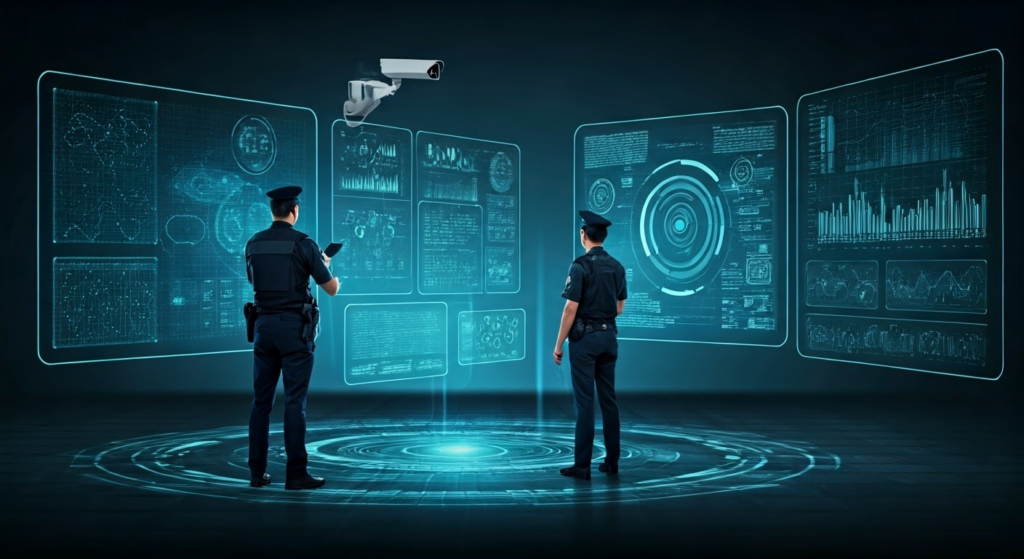
Technology is becoming more important in how law enforcement handles drug crimes. New tools in surveillance, data analysis, and digital forensics help agencies follow drug trafficking networks, find suspects, and collect evidence in drug cases.
But using technology also brings up some serious ethical and legal issues. There are concerns about privacy, the chance of misuse of surveillance information, and the possibility of increasing racial biases in algorithms that predictive policing tools use. These points need careful review and oversight.
Surveillance and Data Analytics
Law enforcement agencies are using more surveillance technologies and data analysis to fight drug crimes, particularly targeting known drug users. They use advanced systems like military equipment, CCTV cameras, license plate readers, and facial recognition software. These tools help them watch public areas and follow people suspected of being involved in drug activities.
Data analysis tools allow law enforcement agencies to look at large amounts of data from many places. This helps them find patterns, understand drug markets, and predict possible criminal acts. Some supporters say these technologies can improve the fight against crime. However, there are big concerns about privacy and the risk of misuse.
Critics stress the need for strong checks and rules on how data is collected and kept. They want safeguards to stop racial bias in how algorithms make decisions.
Digital Forensics and Cyber Patrols
The digital world is becoming more important in drug investigations. Law enforcement agencies are using digital forensics and cyber patrols to fight against online drug sales and related crimes. Digital forensics experts are essential in finding and studying digital evidence from devices that have been seized. They look for communication records, financial transactions, and other information that can help in criminal cases.
Cyber patrols keep an eye on online platforms and forums, often found in the dark web, where people may buy and sell illegal drugs. Police officers, trained to spot hidden language, unusual behavior, and gather online intelligence, are key in stopping these drug markets.
Yet, it is hard to balance effective law enforcement with protecting people's digital privacy and freedom of speech. As technology changes, law enforcement agencies need to manage this tricky area, making sure their investigative methods follow the law and protect people's rights.
Community-Based Approaches to Drug Prevention
Many people see that only depending on law enforcement is not enough. So, community-based methods for stopping drug use have become more popular. These efforts focus on teamwork among community groups, healthcare workers, teachers, and law enforcement to deal with the many sides of drug use and create healthier communities.
By involving local people, these methods try to build supportive places, offer education and resources, and tackle the social issues that lead to drug use. This complete view understands that stopping drug use effectively takes all of us working together and focusing on the main causes within our communities.
Education and Outreach Programs
Drug education and outreach programs are key parts of community efforts to prevent drug use. It is important to reach young people before they start using drugs. They need clear information about drugs, the dangers of drug use, and ways to make healthy choices.
Good education programs do more than share facts about drugs. They help build strength, improve decision-making skills, and give young people the tools they need to resist peer pressure. This way, they can make safe choices for their health.
Often, these programs include fun workshops, mentoring from peers, and community activities. These events help raise awareness about why drug prevention is important and encourage healthy living. By getting young people involved and giving them knowledge and skills, these programs help create healthier communities.
Supporting At-Risk Populations
Community-based ways to prevent drug use often aim to help people who are at risk. This is because some individuals and communities have a higher chance of facing problems with drugs due to issues in society, economy, and their surroundings.
These groups might consist of young people from underprivileged communities, those facing homelessness, individuals dealing with mental health struggles, and people who have been released from prison. They often do not have stable housing, jobs, or access to support services.
Programs designed for these communities focus on their specific needs. They offer help with housing, job training, mental health care, and drug treatment. Building a strong support network in the community is very important. This helps people face their issues and lowers the risk of falling back into unhealthy habits.
Legal and Ethical Considerations in Drug War Policing
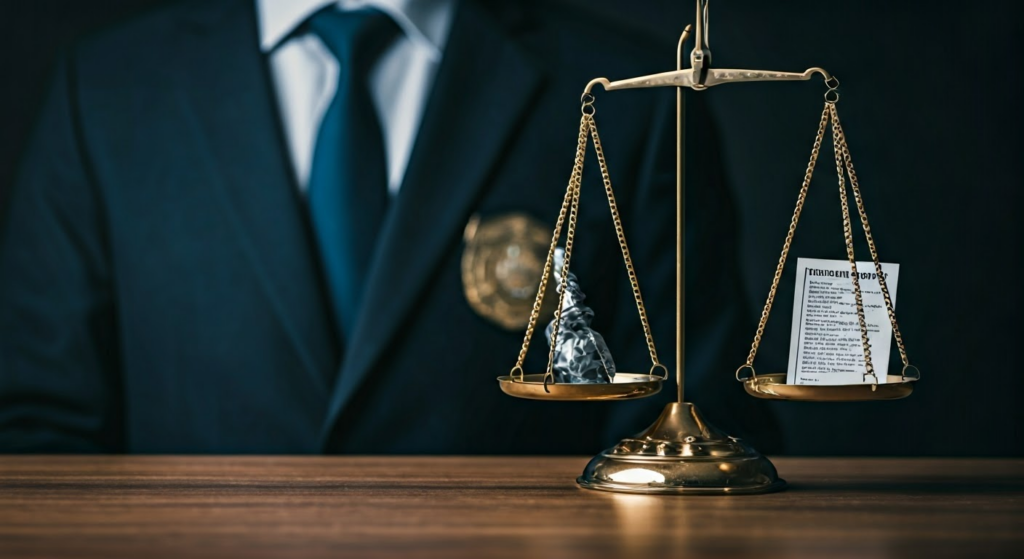
The way law enforcement handles the War on Drugs has led to many discussions about what is right and wrong. Tactics like stop-and-frisk, using confidential informants, and heavy use of surveillance tools worry many people. They fear these methods might violate civil rights and affect marginalized communities the most.
Finding the right balance between strong law enforcement and protecting people's rights needs careful checking of police actions. Also, the moral issues of focusing more on punishment than on public health when dealing with drug use need deeper thought. This is especially important as other ways to handle drug issues become more popular.
Privacy Concerns and the Fourth Amendment
The growing use of surveillance tools in drug law enforcement creates big worries about privacy. This brings up discussions about how far the government can go into people's lives. The Fourth Amendment of the US Constitution protects people from unreasonable searches. It requires law enforcement to get warrants based on good reasons before they search.
However, new surveillance tools like facial recognition software, Stingray devices that act like cell phone towers, and predictive policing methods make us rethink what privacy means. These tools could lead to mass surveillance and might not be properly controlled, which raises fears about abuse, a topic discussed in academic publications such as those from Harvard University Press.
It is important to find a balance between effective law enforcement and protecting privacy rights. This needs constant talk, clear information about surveillance methods, and strong legal rules to make sure these tools do not violate people’s rights as outlined in the Constitution.
The Debate Over Mandatory Minimum Sentences
Mandatory minimum sentences for drug offenses have been a key part of the War on Drugs. These sentences have faced a lot of nearly endless debates about their legality and ethics. Supporters believe that the sentences help keep drug crimes down and hold serious offenders responsible. On the other hand, critics say these rules are often too severe, do not allow judges to make choices, and lead to mass incarceration, especially in minority communities.
These rules are often used for nonviolent drug offenses. They have led to long prison sentences for people who are caught with drugs or are involved in low-level offenses. This situation puts a big strain on the prison system and does not solve the reasons why people use drugs.
With more people understanding the social and economic issues caused by mass incarceration and how mandatory minimum sentences are not stopping drug use, a movement is growing. This movement promotes change in sentencing laws. They ask for more judge’s choices, alternative sentencing options, and a greater focus on helping people instead of punishing them.
The Psychological Impact of Drug Wars on Law Enforcement Officers
Working on the front lines of the War on Drugs can impact law enforcement officers greatly. They face traumatic events daily, and media reports often highlight these challenges. Officers deal with people struggling with addiction and see the harmful effects of drug use. This can hurt their mental and emotional health.
Also, the need to make arrests, red tape, and dangers of fighting drug-related crime add to their stress and lead to burnout. It's important to address the mental health needs of law enforcement officers. This helps them stay well and serve their communities safely and effectively.
Stress and Burnout Among Police Officers
Police officers who enforce drug laws experience a lot of stress because of their job. They often find themselves in risky situations, see traumatic events, and deal with the effects of addiction and violent crime and violence. This can harm their mental health.
Additionally, the fast pace of drug-related crime, the pressure to make arrests, and limited resources can cause burnout. Burnout can make officers feel emotionally drained, pessimistic, and less accomplished, which can harm their job performance and overall well-being.
It is important to help police officers manage stress and burnout. We need to create policies for a better work-life balance. Providing access to mental health resources and building a supportive work environment can help lessen the mental strain from working in the drug war.
The Need for Mental Health Resources
Law enforcement officers face a lot of stress due to the War on Drugs. This brings a real need for mental health resources that focus on their specific situations. Many officers do not seek help because they worry about the stigma around mental health issues. They fear that admitting they have problems might affect their jobs.
It is important to create an environment that supports officers. They should feel safe to ask for help without worrying about being judged or punished. Offering confidential counseling, peer support groups, and mental health training can help officers learn how to cope with stress. This can help them be stronger and deal with trauma better.
Meeting the mental health needs of law enforcement officers is important not just for them. It is vital for everyone’s safety. Healthy officers are more able to serve their communities well. They can make better decisions and have good interactions with the public.
Conclusion
In conclusion, the role of police in drug wars affects many areas. This includes its history, social effects, and economic costs. Law enforcement’s job in drug policy comes with problems like racial inequalities and issues between police and communities. We see rising jail rates as a concern. As we look at what has worked and what hasn’t in the war on drugs, we should think about other options. This could include decriminalization and methods that reduce harm. In the future, drug policy and law enforcement may change with reforms and legalization. This change will happen alongside new technology and prevention strategies from communities. It is important to deal with legal, ethical, and psychological issues for a better understanding and improvement in fighting problems related to drugs.
Frequently Asked Questions
What Is the History Behind the War on Drugs?
The War on Drugs started in the 1970s when President Nixon took action to fight drug use in the United States. However, drug prohibition actually began in the early 20th century. It was driven by social fears and racial biases at that time.
How Have Drug Laws Affected Incarceration Rates in the US?
Strict drug laws, especially ones that have mandatory minimum sentences, have greatly raised the number of people in prison in the United States. Drug offenses are now one of the main reasons for imprisonment. This situation adds to a prison system that is both expensive and overcrowded.
What Are the Main Arguments Against the War on Drugs?
Critics believe the War on Drugs has not worked to lower drug use. Instead, it has led to many people going to prison, increased racial differences, and more violence. They support drug policy reform. They want a shift from punishment to a public health approach. This new approach would focus on treatment and harm reduction.
How Does Drug Policy Differ Internationally?
Drug policies are different all around the world. Some countries are very strict and do not allow drugs at all. Other places have relaxed rules or made drugs legal. These countries focus more on helping people's health and safety rather than punishing them through the criminal justice system.
Can Decriminalization Help Solve the Drug Crisis?
Supporters of decriminalization believe that changing from punishing drug use to focusing on public health can help solve the drug problem. This change could lower the number of people in jail and make it easier for individuals to get treatment and harm reduction services.
https://web.archive.org/web/20180827075426/https://escholarship.org/uc/item/6d09j0n2
https://doi.org/10.1080%2F0735648X.2009.9721268
https://en.wikisource.org/wiki/Author:Ronald_Wilson_Reagan/Presidential_Proclamations
https://en.wikisource.org/wiki/Author:George_W._Bush/Executive_orders
https://www.nytimes.com/1970/10/28/archives/nixon-signs-drug-abuse-control-bill.html
https://www.nytimes.com/2008/04/21/world/americas/21ecuador.html
https://pubmed.ncbi.nlm.nih.gov/20543969
https://en.wikisource.org/wiki/Author:William_Jefferson_Clinton/Executive_orders
https://www.theguardian.com/world/2012/apr/15/colombia-global-drugs-taskforce
https://archive.org/details/pipedreambluesra00lusa
https://www.washingtonpost.com/wp-dyn/content/article/2010/08/02/AR2010080204360.html
https://www.washingtonpost.com/history/2021/12/01/opioid-crisis-civil-war-addiction
https://www.washingtonpost.com/history/2021/12/01/opioid-crisis-civil-war-addiction

